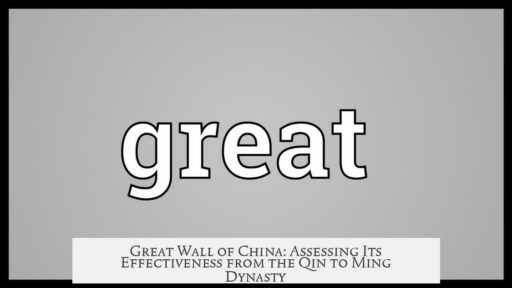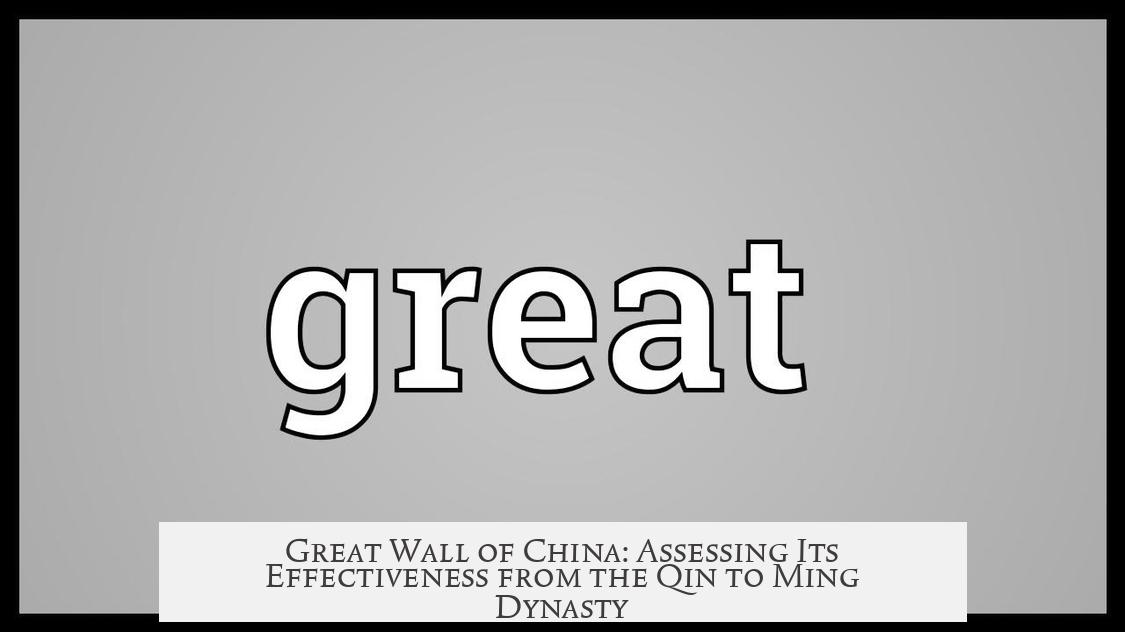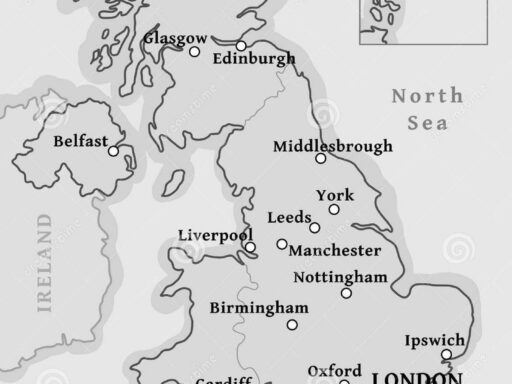The Great Wall of China, after its completion, showed mixed effectiveness in meeting its intended purposes. Initially, its military defense capabilities were limited, but over time it played a vital role in early warning, reconnaissance, and stabilizing agricultural and economic regions. Its strategic value evolved across different dynasties, culminating in significant improvements under the Ming dynasty.
During the Qin and Han dynasties, the Great Wall consisted mainly of small, disconnected sections. This fragmentation significantly reduced its military defense effectiveness. Invaders or raiders could navigate around isolated portions or even bribe guards to gain entry. The wall did not serve well as a physical barrier to large-scale invasions due to these limitations.
However, the wall was more effective as a network of reconnaissance and early warning posts. When adequately manned, soldiers stationed along the wall could spot invading forces from the northern steppes. They used signal fires and smoke to communicate threats rapidly along the chain of posts. This early warning system allowed the Chinese military to deploy defense forces in advance of an invasion, targeting raiders effectively before they penetrated deep into Chinese territory.
The wall’s primary strategic objective was uncertainty and surveillance against nomadic raiders such as the Xiongnu, Mongols, Jurchen, and Manchu tribes. These groups attacked areas beyond the wall, but crossing the wall itself posed significant logistical challenges. While the wall did not fully stop raids, it functioned as a deterrent and slowed the pace and scale of attacks.
Besides its military function, the wall had a significant impact on stabilizing agricultural regions. Constructing and maintaining the wall allowed peasants in the fertile plains south of the wall to live and farm with less fear of frequent raiding. This security encouraged agricultural expansion and development, fostering economic stability in key provinces. The wall indirectly supported China’s internal resource base by protecting these productive areas.
From the perspective of repelling smaller and frequent pillaging raids, the wall was reasonably effective. Frequent threats from nomadic groups could be mitigated more easily with the physical barrier, patrols, and fortified posts. This helped maintain order and preserve economic activities in areas near the border regions.
The Ming dynasty represents a turning point in the Great Wall’s effectiveness. After overthrowing the Mongol-led Yuan dynasty, the Ming rulers linked multiple sections into a continuous wall, close to the modern structure visible today. This unified wall improved the capacity for reconnaissance, communication, and rapid response. The Ming garrisons expanded westward, reinforcing portions of the frontier that were previously vulnerable.
The Ming era also featured strengthened political and military strategies complementing the wall’s physical presence. Moving the capital further north allowed better control and faster deployment of forces. These efforts helped make the wall a more credible line of defense than before.
Despite its improvements, the wall eventually fell when the Manchu invaded during the seventeenth century. However, this breach was not due to the wall’s failure alone. A key reason was internal betrayal by the general Wu Sangui, who granted Manchu forces entry. This event highlights how political factors could override physical defenses.
| Aspect | Effectiveness | Details |
|---|---|---|
| Qin and Han Walls | Limited | Fragmented sections; easy to bypass or bribe |
| Reconnaissance | Effective | Signal fires; early warning system to mobilize defense |
| Discouraging Raiders | Partial | Raids outside wall; wall slowed but didn’t fully stop incursions |
| Agricultural Stability | Effective | Protection allowed farming areas to develop |
| Ming Dynasty Wall | More effective | Continuous wall; better communication and defense capacity |
| Wall’s Fall | Due to betrayal | General opened gates to Manchu invaders, not wall failure |
In summary:
- The early wall was limited in military use but excelled at early warning and reconnaissance.
- The wall helped protect agricultural zones, encouraging economic growth.
- The Mongol, Jurchen, and Manchu raiders found ways to raid beyond the wall despite its presence.
- The Ming dynasty improved the wall’s continuity, communication, and defense mechanisms significantly.
- The wall ultimately failed due to political betrayal, not solely military weakness.
How Effective Was the Great Wall of China After Its Completion?

Short answer: The Great Wall of China was surprisingly effective as a massive communication and reconnaissance system, though it was less successful as an impenetrable military barrier. Over centuries, its true strength lay in warning, controlling raids, and supporting stable agriculture rather than outright military defense—especially before the Ming dynasty unified and extended it.
Let’s unpack that. The Great Wall isn’t a one-trick pony. It wore many hats, from lookout to deterrent, to even a tool for economic stability. But it has a reputation as a huge, unbreachable fortress. So how well did it really work? Buckle up, it’s a story full of strategy, sneaky rogues, and some political drama.
The Qin and Han Dynasties: So Close, Yet So Far
Imagine a wall that’s more like a series of disconnected neighborhood fences rather than a continuous fortress. During the Qin and Han dynasties, China built small sections of walls and linked them a bit, but never a single, unbroken wall. If you wanted to sneak in or out, you could just walk around or bribe a guard at a checkpoint. So, was it a total fail militarily? Sort of.
Its military power was fairly limited. But here’s the twist: it was great as a network of reconnaissance posts. These sections worked like a giant early-warning radar system. Soldiers would spot incoming nomadic raiders and light signal fires, sending a message along unbroken chains back to the capital. This clever system helped mobilize defenses quickly and prevented many surprise attacks.
Wall as an Early Warning System: The Real Defense Weapon
The Great Wall’s main mission was defense against northern nomads like the Xiongnu, Mongols, Jurchen, and Manchu people. Transporting a whole army over even one section of the wall isn’t easy, but spotting that army early and communicating warnings was golden. This gave Chinese defenders time to prepare and respond.
In this capacity, the wall was quite effective. It made it significantly harder for raiders to launch surprise attacks. The logistics, in those days, of moving big forces clandestinely were nightmarish, especially with signal fires blazing. It was more than a wall; it was an advanced defense network.
“Scaring Off” Raiders and Power Projection: Mixed Results
One could think the wall’s mere presence frightened nomads into submission. Unfortunately, history says not exactly. The nomads continued raiding areas outside the wall—and sometimes managed to break through. From this viewpoint, the wall didn’t project sheer power as a deterrent as effectively as hoped.
Raids still terrorized regions beyond the Wall, but crossing it remained a challenge. The wall’s deterrent effect was modest—it kept raiders out of some places but not all, especially considering how long the wall is (over 13,000 miles!).
Keeping Peasants Safe and Supporting Agriculture

Here’s a lesser-known benefit: the Great Wall helped create safer agricultural zones. Local peasants behind the wall farmed without constant fear of sudden raids. This provided stability in food production and helped China’s economy remain resilient.
In fact, many fertile plains south of the wall blossomed into essential farming regions. By repelling frequent pillagers, the wall indirectly contributed to economic and resource stability.
The Ming Dynasty: The Wall’s Peak Effectiveness
Fast forward to the Ming dynasty (1368–1644). They weren’t messing around. The Ming expanded the wall, connecting many of its previously scattered sections to create a more continuous, more formidable barrier—the Great Wall that tourists today usually visit.
This improved the wall’s function as a reconnaissance and communication system. Garrison expansions ensured better manning of the wall, enhancing its ability to spot invaders and transmit signals effectively.
The Ming also used clever political strategies like relocating capitals northward, bolstering the wall’s strength. Ultimately, the wall only fell because of an internal betrayal by Wu Sangui, who opened the gates to the invading Manchu forces—an event unrelated to the wall’s military design.
Final Thoughts: A Multifaceted Marvel
The Great Wall wasn’t a magic shield that stopped every invasion. It was part physical barrier and part sophisticated early-warning network that protected China in waves. It enabled faster communication, brought reminder to borders, discouraged raiders selectively, and created safer zones for economic growth.
So, if you meet someone who jokes that “the Great Wall failed because invaders got in anyway,” you can point out the *real* story. It was never alone in defending China; it was the eyes and ears that made defense smart and sustainable.
The answer to “How effective was the Great Wall of China after its completion?” is: it was MOST effective at what it was *actually* built for—early warning, communication, controlling raids, and supporting China’s vast agricultural economy—especially in its fully developed Ming form.
What does this mean for today? Think about how modern buildings use sensors and alarms to notify of intruders, not just block them. The Great Wall was ancient China’s giant sensor network. Maybe it doesn’t stop every thief, but it sure alerts the owners fast enough to call the guards.




